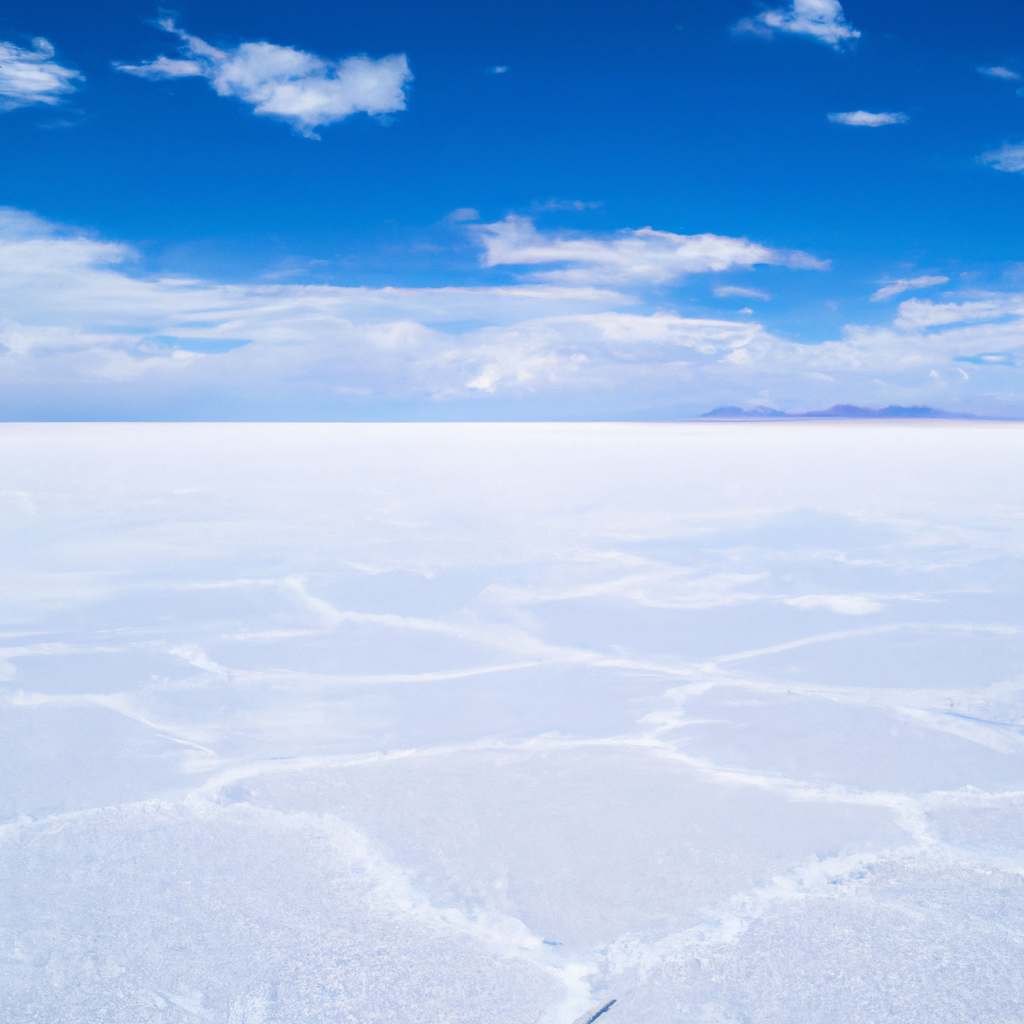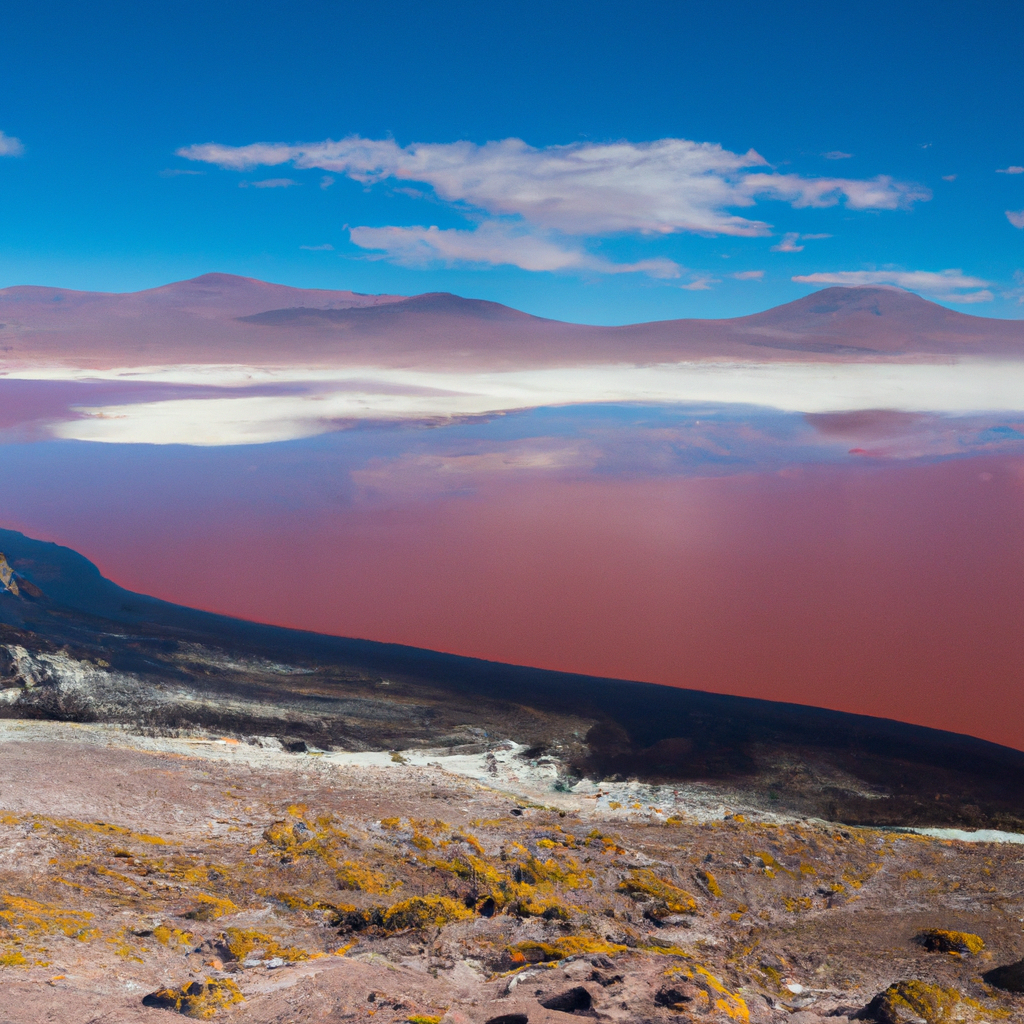Salar de Uyuni In Bolivia: Overview,Prominent Features,History,Interesting facts
Overview:
Salar de Uyuni is the world’s largest salt flat, located in the Potosí and Oruro departments of southwest Bolivia. Spanning over 10,000 square kilometers (4,000 sq mi.), it is the largest salt flat in the world. It was created as a result of transformations between several prehistoric lakes. During the season when the surface of the flats covered by a thin sheet of water, the area becomes the world’s largest reflective mirror, providing an awe-inspiring, and often surreal, experience for travelers. The salt is estimated to be more than a meter thick in places. Salar de Uyuni and its adjacent Lagoons are an important breeding ground for three species of world’s largest flamingos: James’s, Chilean, and Andean. The salt desert has also become a major tourist attraction, with people coming from all over the world to witness the strange beauty of the landscape. You can learn history, culture, and heritage through these magnificent monuments in Bolivia
Prominent Features:
1. Largest Salt Flat on Earth: With over 10,000 square kilometers, Salar de Uyuni is the world's largest salt flat. The vast white emptiness of the landscape, which is covered with a thick layer of salt, is a starkly beautiful sight to behold. 2. Unique Lakes and Desert Oases: Salar de Uyuni is also home to some unique natural features, such as several salt lakes. The bright blue waters of the Laguna Colorada, which is tinted by its travertine deposits, stands out particularly. Along with the lake, the area is home to desert oases, lush vegetation, and several species of birds and llamas. 3. Ancient Remains: The ancient remains of astride between Salar de Uyuni have been studied by archeologists, giving us insight into the cultures which once inhabited the area. 4. Cacti on the Horizon: Stand in the middle of the salt flat and you can spot some unique cacti in the distance, creating a surreal landscape. 5. Amazing Reflections: During the rainy season, the salt flat becomes a shallow mirror of the sky, reflecting the clouds down to the surface and creating an incredible visual effect. This national monument of Bolivia portrays the history and culture of the country.
History:
The Salar de Uyuni, located in southwest Bolivia, is believed to be the world’s largest salt flat and is thought to have formed after transformations to the area due to tectonic shifts and several prehistoric lakes drying up. Evidence of these geological events can still be found today in the sedimentary deposits found on the surface of the salt flat. Humans have been living in and around the Uyuni salt flat since at least 10,000 BCE. foragers and hunter-gatherers gathered there for thousands of years. In the mid to late 1500s, the Spanish colonizers arrived in the area and began to exploit the salt from the salt pans. By 1888, the Uyuni salt flat was divided up among several miners, leading to the best and known example of “salineras” or salt works. At its peak of production, the salt works employed over 500 workers, although the exact number is hard to determine since the works were owned by private individuals or companies. In the late 1800s, a railroad was constructed in order for salt to be transported from the mines to other parts of the country. In the 1940s, a large portion of the Salar de Uyuni became a national reserve. Since then, it has been managed and protected by the Bolivian government and various international organizations. As of 2020, the Salar de Uyuni is a popular tourist destination, drawing visitors from around the world to its vast, beautiful landscape and unique biodiversity. Additionally, the salt flat is home to many species of birds, mammals, and flora, making it a great destination for nature-lovers and photographers. You must visit one of these historical places in Bolivia on your Bolivia tour
Interesting facts:
1. Salar de Uyuni is the world's largest salt flat with an area of 10,582 square kilometers. 2. Salar de Uyuni is estimated to contain 10 billion tonnes of salt, making it the largest salt flat in the world. 3. Salar de Uyuni is the driest place on the planet with no annual rainfall. 4. Salar de Uyuni is the remnant of an ancient lake called Coipasa and later Lípez, that dried up around 40,000 years ago. 5. Salar de Uyuni is the world's largest natural mirror, reflecting the sunrise and sunset. 6. Salar de Uyuni is home to the world's largest lithium reserves, estimated to be worth around 7 million tonnes. 7. It’s also home to three endemic species of pink flamingos, Andean geese, vicuñas, llamas, and alpaca. 8. Salar de Uyuni is frequently visited by tourists who come to take advantage of the amazing reflections off its surface. 9. Salar de Uyuni is featured prominently in the science fiction movie Oblivion starring Tom Cruise. 10. Salar de Uyuni is featured in a famous photographic project by artist Michal Krihak featuring surreal images of salt flats landscapes. Visit one of the famous monuments of Bolivia with your friends and family.
Explore Bolivia most popular tourist destination with us. Salar de Uyuni In Bolivia: Overview,Prominent Features,History,Interesting facts,which is 35.14 km away from Bolivia main town, is the most popular destination to add in your travel wishlist.
-
City:
Bolivia
-
state:
Bolivia
-
country:
Bolivia
-
country code:
BO
- postcode:
Location:
Bolivia Bolivia














